Vietnamese New Year: Dates, Animals, Food, and Traditions
Tet, or Vietnamese New Year, is the most important and widely celebrated holiday in Vietnam. It marks the beginning of the lunar calendar and is a time for family reunions, honoring ancestors, and wishing for good luck in the new year.
- 1. What is Tet?
- 2. How Tet is calculated?
- 3. Tet in the Vietnamese calendar
- 4. Tet in 2026
- 5. When is Tet?
- 6. How is Tet celebrated?
- 7. Red, yellow, pink, and orange
- 8. Spiritual Connection with the Gods and Deities
- 9. “When you eat a fruit, think of the man who planted the tree.”
- 10. Luck, Fortune, Abundance, and Positive Energy
- 11. Food for Tet
- 12. Traveling to Vietnam during Tet
- 13. Weather
- 14. Visa Application
- 15. Transportation
- 16. Accommodation
- 17. Restaurants
- 18. Shops
- 19. Banks
- 20. Package Tours
- 21. Tet in Major Cities in Vietnam
- 22. Ho Chi Minh City
- 23. Hanoi
- 24. Conclusion
Together with several nationally celebrated holidays throughout the year, “Tet” or Vietnamese Lunar New Year stands as the most important and longest festival in Vietnam. So significant is the event that it might disrupt your travel experience should you plan to visit Vietnam during this special occasion. In this article, we invite you to take a stroll with us through the enchanting details of Tet. Get ready to immerse yourself in unique insights that will not only pique your curiosity but also equip you with the savvy to navigate whatever surprises this vibrant celebration might bring your way.
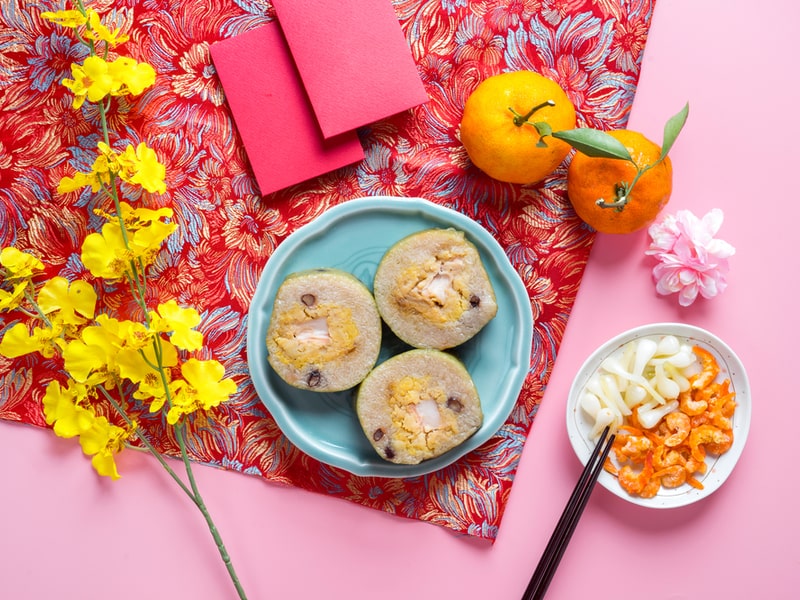 Vietnamese foods for Tet: Banh Chung, mandarin, pickled onions, and dried shrimps.
Vietnamese foods for Tet: Banh Chung, mandarin, pickled onions, and dried shrimps.
What is Tet?
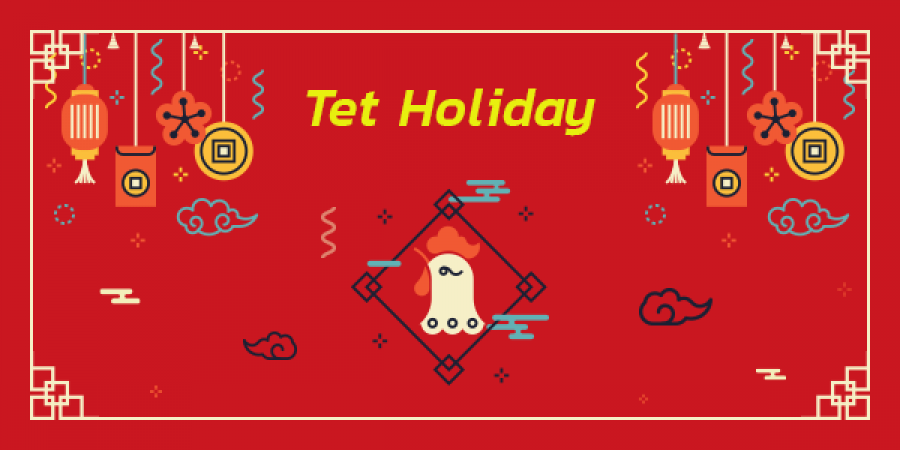 Photo @tuhocielts.com
Photo @tuhocielts.com
In simpler terms, Tet celebration is akin to Westerners having Thanksgiving, Christmas, and New Year festivities rolled into one.
To elaborate, Tet holds a special place in the hearts of Vietnamese people, intertwined with grand pageantry, a deep embodiment of harmony, good fortune, and a sprinkle of both superstition and spirituality.
While flipping the page of yet another calendar to embrace that motivational “fresh start” effect, Vietnamese people also take this opportunity to profoundly reflect on their country's values and cultural identity—one that is rooted in agricultural awareness and an enduring connection to land and rural heritage.
As we unravel the intricacies of each Tet ritual and custom, it will gradually dawn on us that every small and large manifestation that the Vietnamese have passed down from generation to generation collectively honors this broader, holistic significance, be it from food preparation, altar decoration, to physical pilgrimage and verbal wishes.
Watch our latest video: My heart can feel Tet for the most vivid imagery from Tet in Vietnam.
How Tet is calculated?
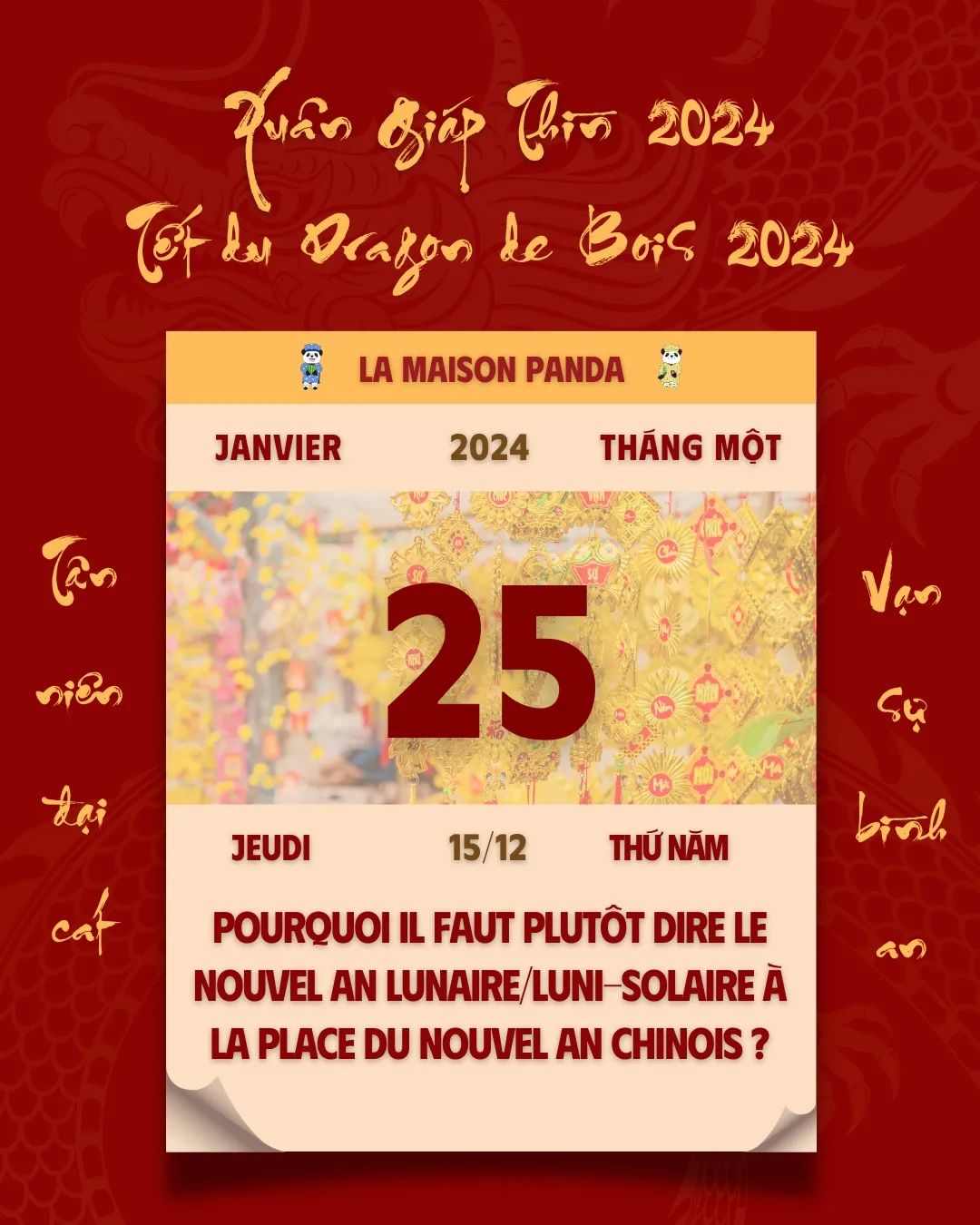 Photo: @lamaisonpanda.officiel / Instagram
Photo: @lamaisonpanda.officiel / Instagram
Even with 54 ethnic groups, Tet festivities in Vietnam are largely shaped by the customs of the Kinh people, which account for up to 86% of the country’s population (as of August 2022). As a consequence, this demographic influence affects the days earmarked for celebration.
Tet in the Vietnamese calendar
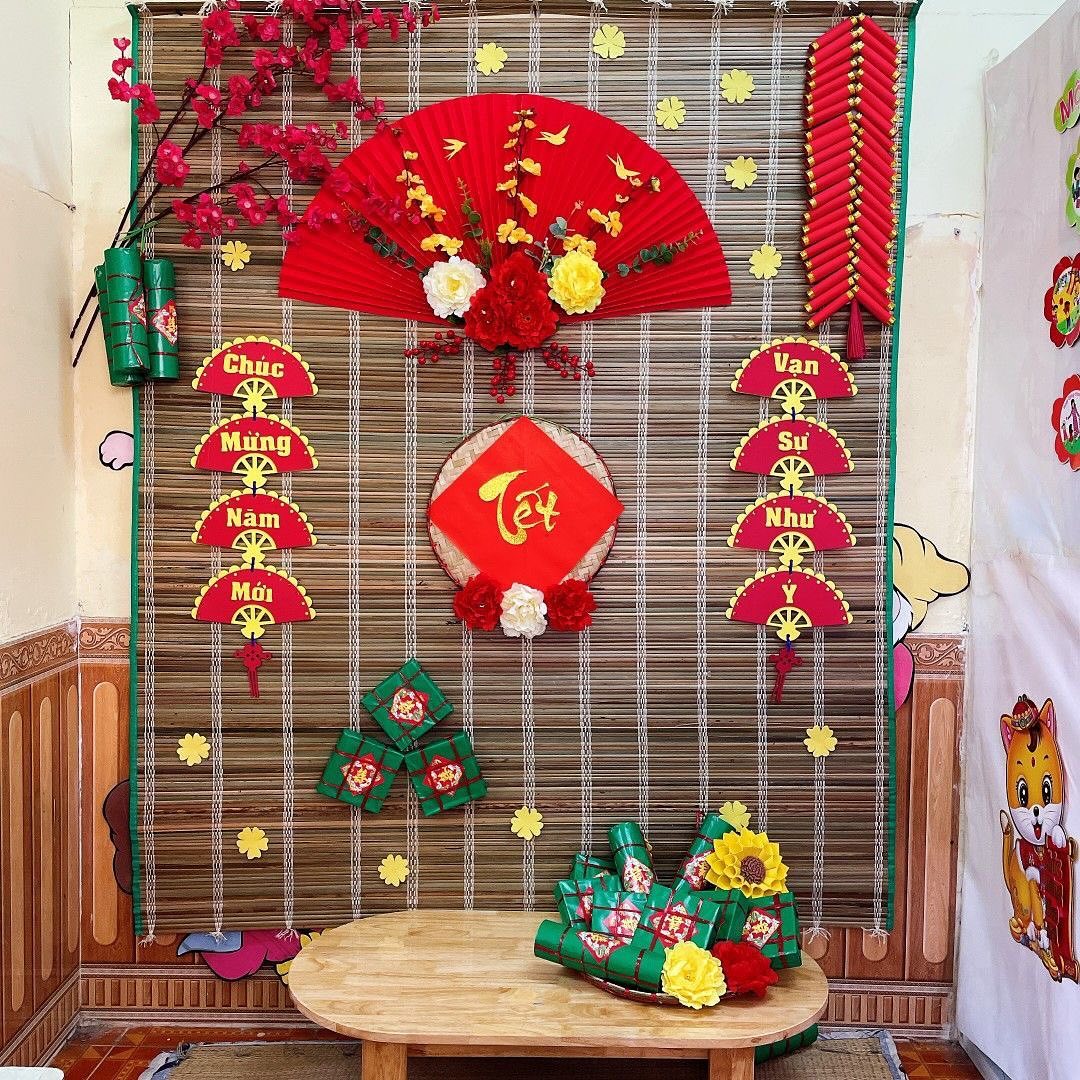 Photo: @piggy_decor/ Instagram
Photo: @piggy_decor/ Instagram
The Vietnamese calendar, in distinction to the widely adopted Gregorian calendar based solely on the solar cycle, takes into account both lunar and solar cycles. According to the lunar calendar, every 29.5 days, the Sun, the Moon, and the Earth are on the same line. This incredible phenomenon marks the first day of every month.
Essentially, Tet is commemorated on the initial day of the first month in the Vietnamese calendar, a day we fondly refer to as "mừng một." Isn’t it amazing that every year, we get to witness the convergence of the entire universe—heaven, earth, and humanity—come together on this one very special day?
This also explains why, despite the variations each year, Tet typically falls between mid-January to mid-February in the Gregorian calendar.
Tet in 2026
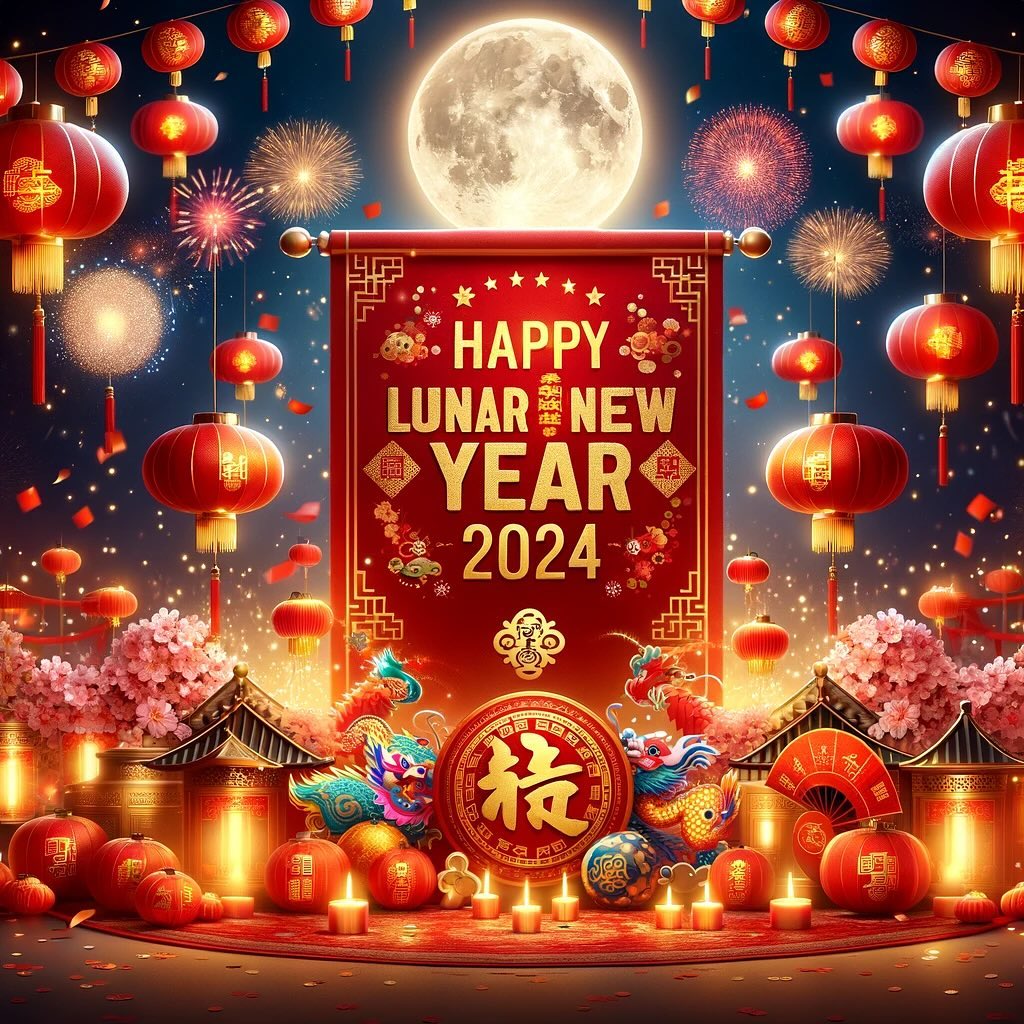 Photo: @vitalnest_us/ Instagram
Photo: @vitalnest_us/ Instagram
If you are into the Eastern Five Elements and astrology, the lunar new year of 2026, which will grace the calendar on February 18, brings its own meaningful symbolism and celestial patterns:
Fun fact #1: Horse, or “Bính Ngọ” to be more precise, is the zodiac animal of 2026.
In Vietnamese culture, the Horse symbolizes strength, vitality, speed, and independence. This year’s Horse, paired with the heavenly stem “Bính” (which corresponds to the **Fire** element), forms the **Fire Horse**—a sign associated with energy, ambition, and intensity. While fiery and bold, those born in this year are believed to carry great determination and drive, sometimes bordering on impulsiveness.
Fun fact #2: Unlike 2024, Tet 2026 does not fall on a 30th lunar day. The old lunar year ends on the 29th day of the twelfth month, making New Year’s Eve slightly more common—but still spiritually powerful.
This means the Vietnamese New Year in 2026 begins immediately after the 29th day, without the “rare” 30th day phenomenon. Though less astronomically unique than 2024, Tet 2026 still marks a sacred transition, celebrated with equal fervor and traditional rites across Vietnam.
When is Tet?
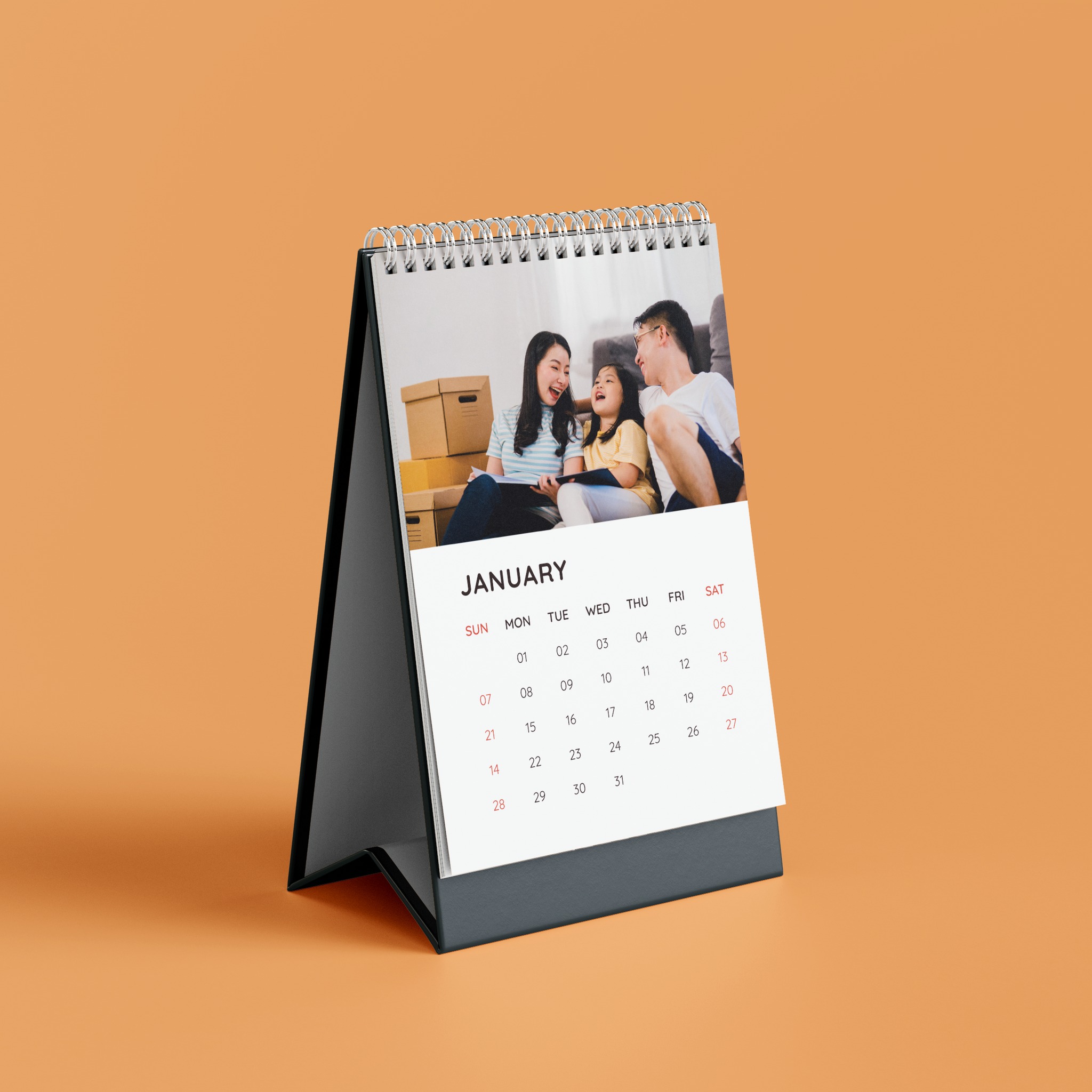 Photo: @inantamphuc/ Instagram
Photo: @inantamphuc/ Instagram
In 2020, Tet was on January 25th, Year of the Rat
In 2021, Tet was on February 12th, Year of the Buffalo
In 2022, Tet was on February 1st, Year of the Tiger
In 2023, Tet was on January 22nd, Year of the Cat
In 2024, Tet is on February 10th, Year of the Dragon (7 days from Feb 08 to Feb 14, 2024)
In 2025, Tet falls on Wednesday, January 29, 2025, Year of the Snake.
In 2026, Tet is on February 18, Year of the Horse (7 days from Feb 16 to Feb 22, 2026)
*The holiday spreads 1 day before and 3 to 5 days after the mentioned date. The period before Tet is typically the busiest time for holiday shopping and preparation.
How is Tet celebrated?
In observance of the traditional rituals and ceremonies, here are what Vietnamese families are expected to fulfill when Tet approaches:
Lunar Date | Observance |
December 23 | Ong Cong - Ong Tao Day (Kitchen God Day) |
December 26-28 | Wrapping “Banh Chung” |
December 30 | Family Reunion and Year-End Tribute (“Tat Nien”) |
January 01 | First footers (“Xong Dat”) |
January 02 | Visit Maternal Side |
January 03 | Visit Teachers, Relatives, Friends, and Neighbors |
January 04 | Burn the Offerings for Ancestors (“Hoa Vang”) |
From January 05 | Reopening Businesses |
January 15 | “Tet Nguyen Tieu” |
Red, yellow, pink, and orange
These vibrant colors embody the Vietnamese yearning for prosperity, infusing the surroundings with the jubilant Tet atmosphere. The focus is, therefore, on sentiment rather than mere aesthetics.
From the customary pre-Tet garment shopping to the lively street display of seasonal flowers and the intricate presentation of the five-fruit trays (“mâm ngũ quả”), these colors seamlessly integrate into various aspects of the Tet preparations, adding depth and vibrancy to the festive tapestry.
 Photo: @vitalnest_us/ Instagram
Photo: @vitalnest_us/ Instagram
Shopping for New Items
Your initial encounter with these vibrant hues occurs as the streets come alive with preparations. During the bustling one to two weeks leading up to Tet, a shopping frenzy engulfs the scene. Streets are alive with constant movement, ranging from the hunt for decorations to the search for the perfect attire.
Vendors’ storefronts become a chaotic symphony of parked motorbikes along the sidewalk, accompanied by the persistent cries enticing customers with year-end special promotions. Notably, some Vietnamese will go the extra mile, sparing no expense to have their meticulously crafted “ao dai” tailored or have their whole wardrobe undergo a complete makeover.
Potted Flowers
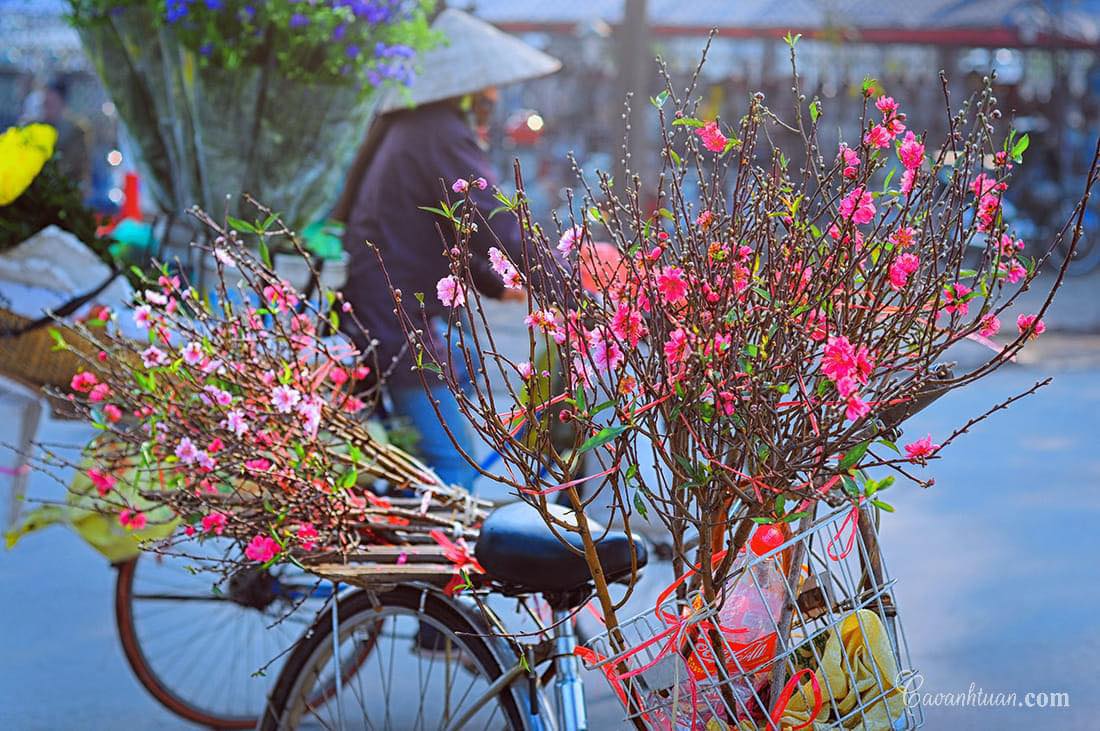 Hoa Dao - Photo: @chanhdaosaigon/ Instagram
Hoa Dao - Photo: @chanhdaosaigon/ Instagram
Similar to how mooncake shops make their overwhelming debut on the streets during the Mid-Autumn festival, the onset of Tet manifests in streets adorned with majestic potted sunflowers, an assortment of vibrant marigolds in various hues, and olive-green lily buds that have been precisely nurtured to bloom on the auspicious first day of the New Year.
And how could we forget about Hoa Mai (Ochna integerrima, or commonly known as yellow apricot blossom), Hoa Dao (peach blossom), and kumquat trees at several pop-up flower markets? But why do they purchase the same flowers every year? It is because Vietnamese people believe that the more luscious the buds and fruits on these trees are, the more wealth and luck they will receive throughout the year.
If you ever think Vietnamese people will engage the service of a large, expensive truck to bring these flower pots home, you have not seen enough of Tet. Between juggling a handful of carrier bags hanging from all of the handlebars they could hook on, a middle-aged dad could skillfully manage to carry a towering four-foot Tet pot on the back of their bike, though we do not recommend you try this!
Mâm Ngũ Quả (Five Fruit Tray)
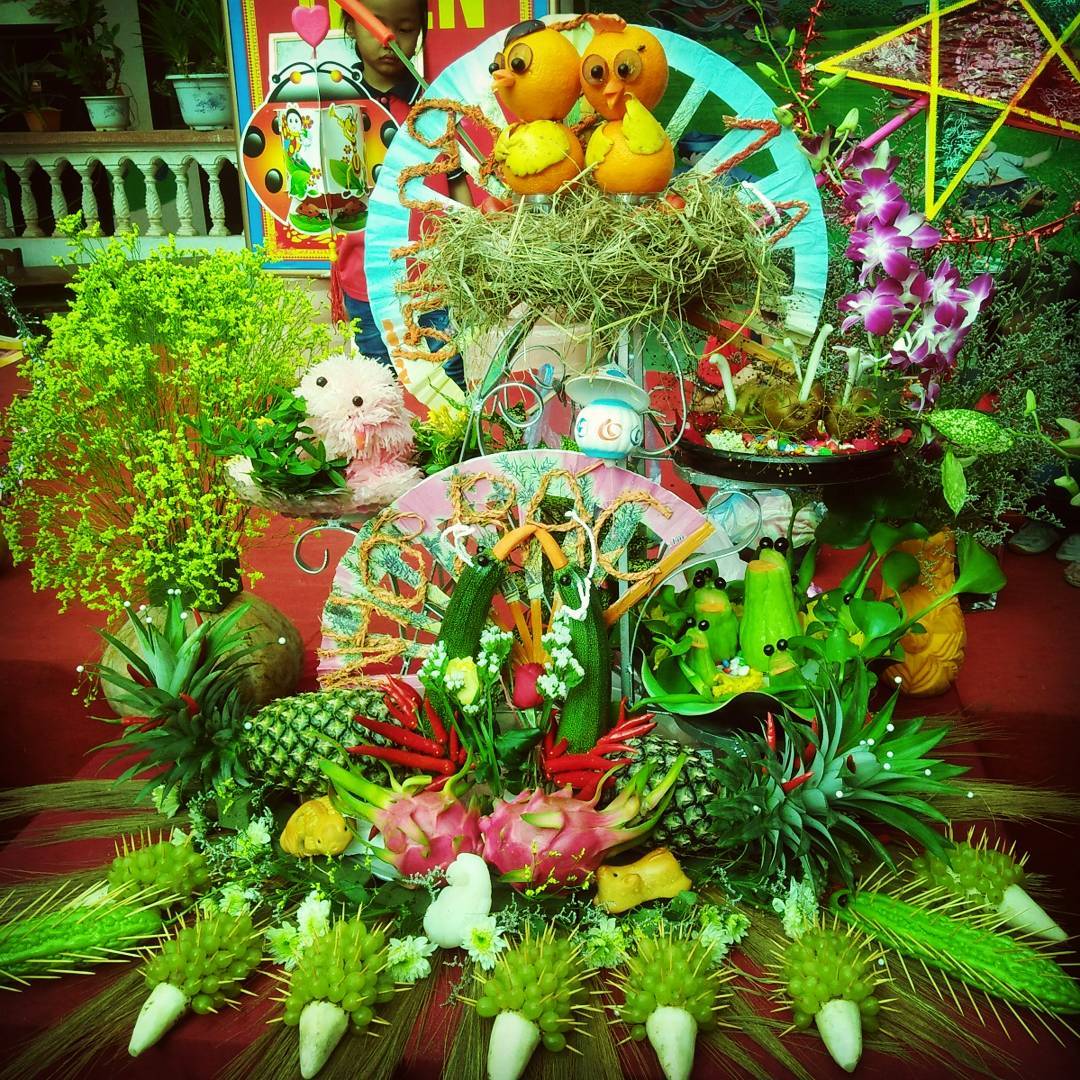 Mâm Ngũ Quả - Photo: @hi_imanh/ Instagram
Mâm Ngũ Quả - Photo: @hi_imanh/ Instagram
Owing to variations in climate and fruit harvests, Mâm Ngũ Quả exhibits a spectrum of colors across regions. Up north, it features pomelos, peaches, kumquats, bananas, and persimmons, while down south, the tray is embellished with pairs of watermelons, coconuts, papayas, custard apples, mangos, and figs. Despite potential incorporations of more luxurious fruits like grapes and pears in modern renditions, the Five Fruit Tray retains its essence as a meaningful gesture reflecting the Vietnamese people’s devotion to their ancestors.
Each fruit on the tray holds its unique symbolism: Green bananas convey vitality, growth, and a wish for peace. Coconuts symbolize the desire for prosperity and good health. Kumquats signify wealth and abundance. Papayas are associated with wishes for prosperity, health, and peace. Red apples are emblematic of luck.
Spiritual Connection with the Gods and Deities
 Photo: @yeubep.official/ Instagram
Photo: @yeubep.official/ Instagram
The roots of Eastern cultures, including Vietnam's, run deep with their connection to divine entities. While some label these traditions as outdated and superstitious, others view them as grounding reminders that humans are not the focal point of the universe. In facing uncontrollable circumstances in the upcoming year, maintaining belief in higher powers can offer solace rather than harm.
Ong Cong - Ong Tao Day (Kitchen Gods’ Day)
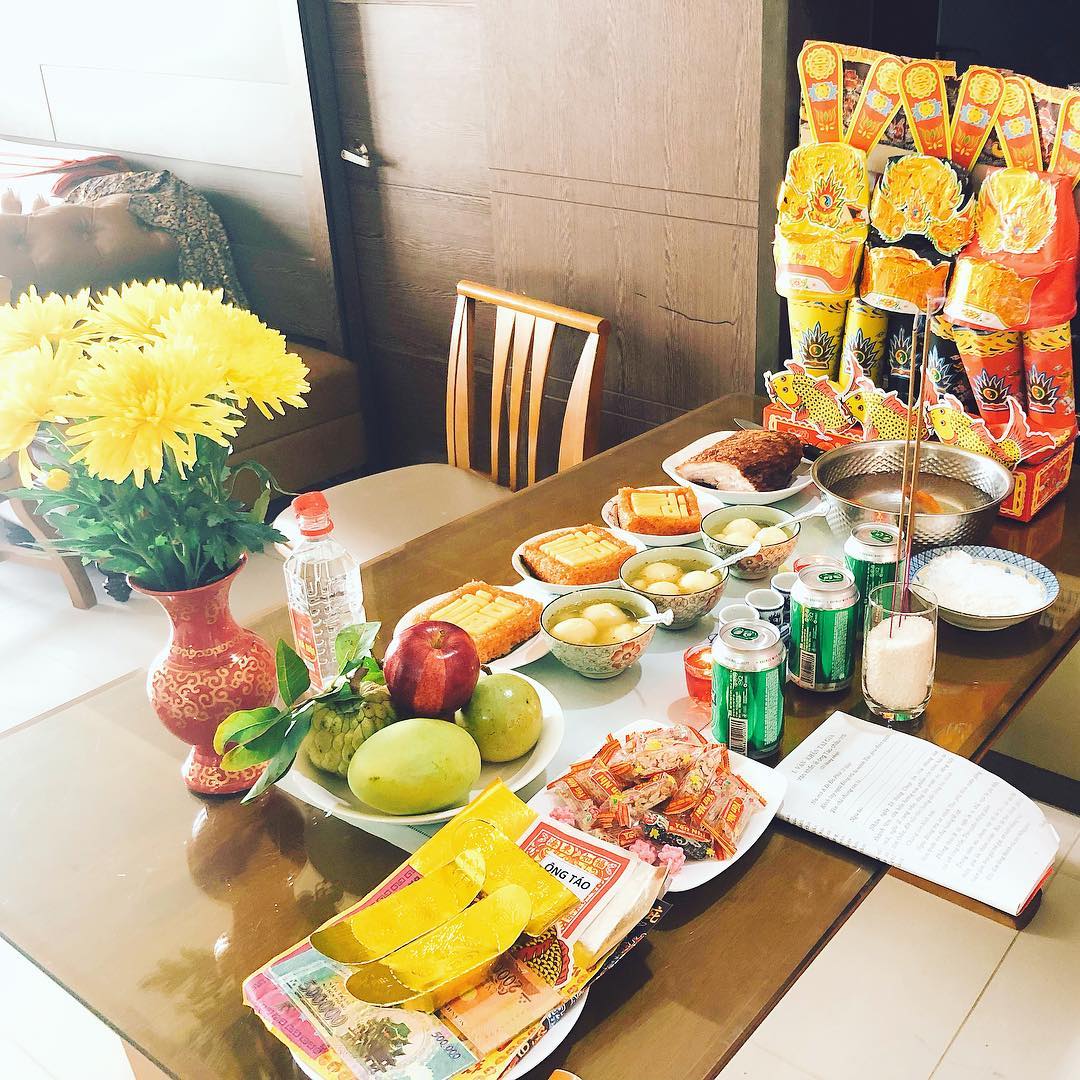 Ong Cong Ong Tao - Photo: @momoffour.88/ Instagram
Ong Cong Ong Tao - Photo: @momoffour.88/ Instagram
Deriving from an ancient folk narrative, the tradition of venerating the Kitchen God on the 23rd day of the twelfth lunar month has evolved into a contemporary custom. Families now assemble a modest altar, featuring offerings of food, incense, and symbolic items such as paper hats, robes, boots, along with votive papers, engaging in a multi-step ritual. The aim is to ensure the Kitchen God reports favorably about the family to the Jade Emperor, ultimately securing blessings for the household.
The symbolic release of carps as celestial transport accompanies this ritual, marking the advent of Tet and embodying a spiritual tradition that fosters optimism for a year filled with abundance and good fortune.
Temple and Pagoda Visit
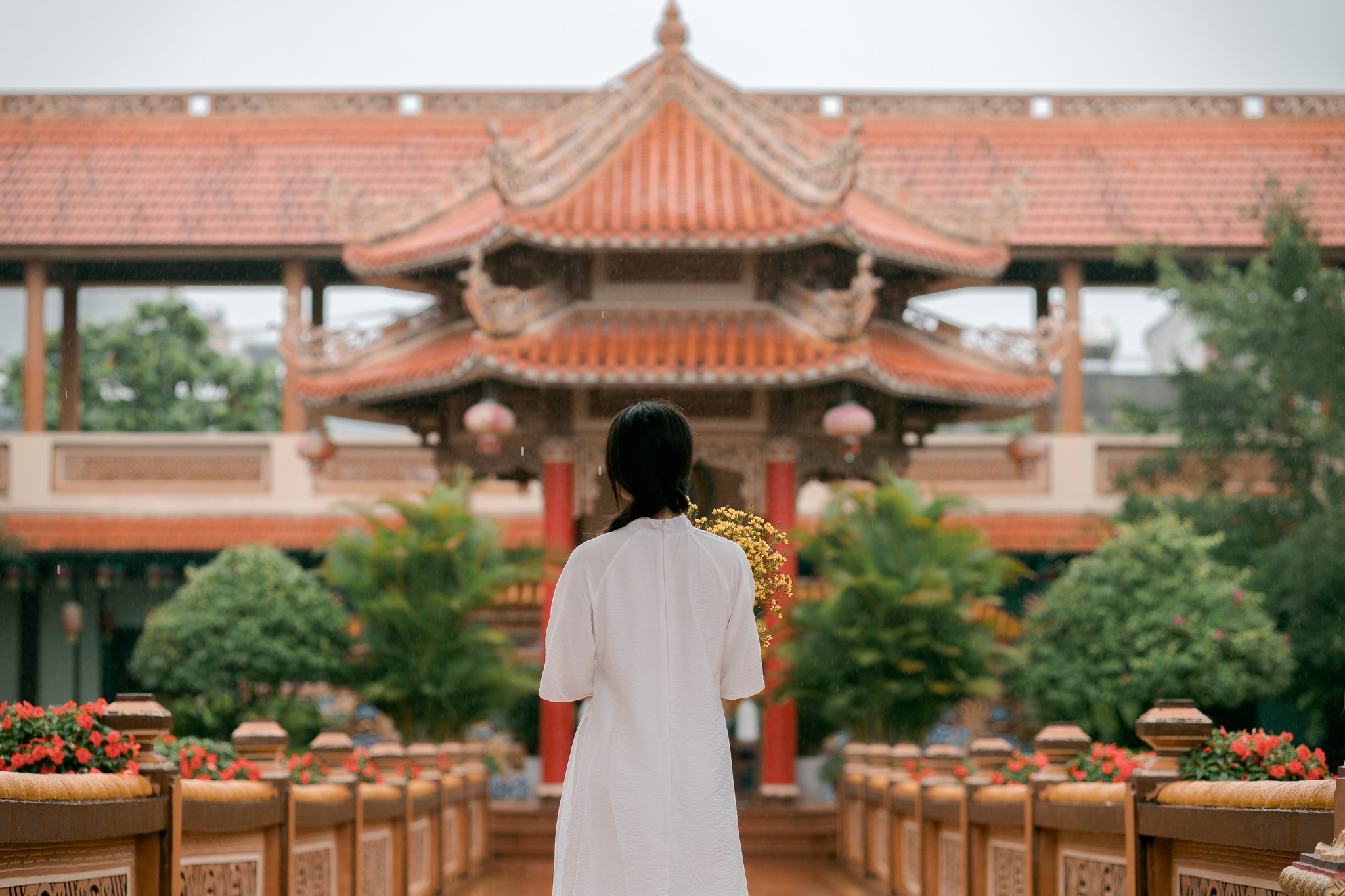 Temple visit - Photo: @thatspot.danang/ Instagram
Temple visit - Photo: @thatspot.danang/ Instagram
Engaging in offerings and prayers at temples and pagodas approximately two weeks before and after Tet is regarded as an auspicious practice for the New Year. People make offerings of flowers, incense, and fruit with the hope of finding peace, dispelling the anxieties and concerns of the old year, and ushering in luck and happiness in the coming year.
Fortune Telling
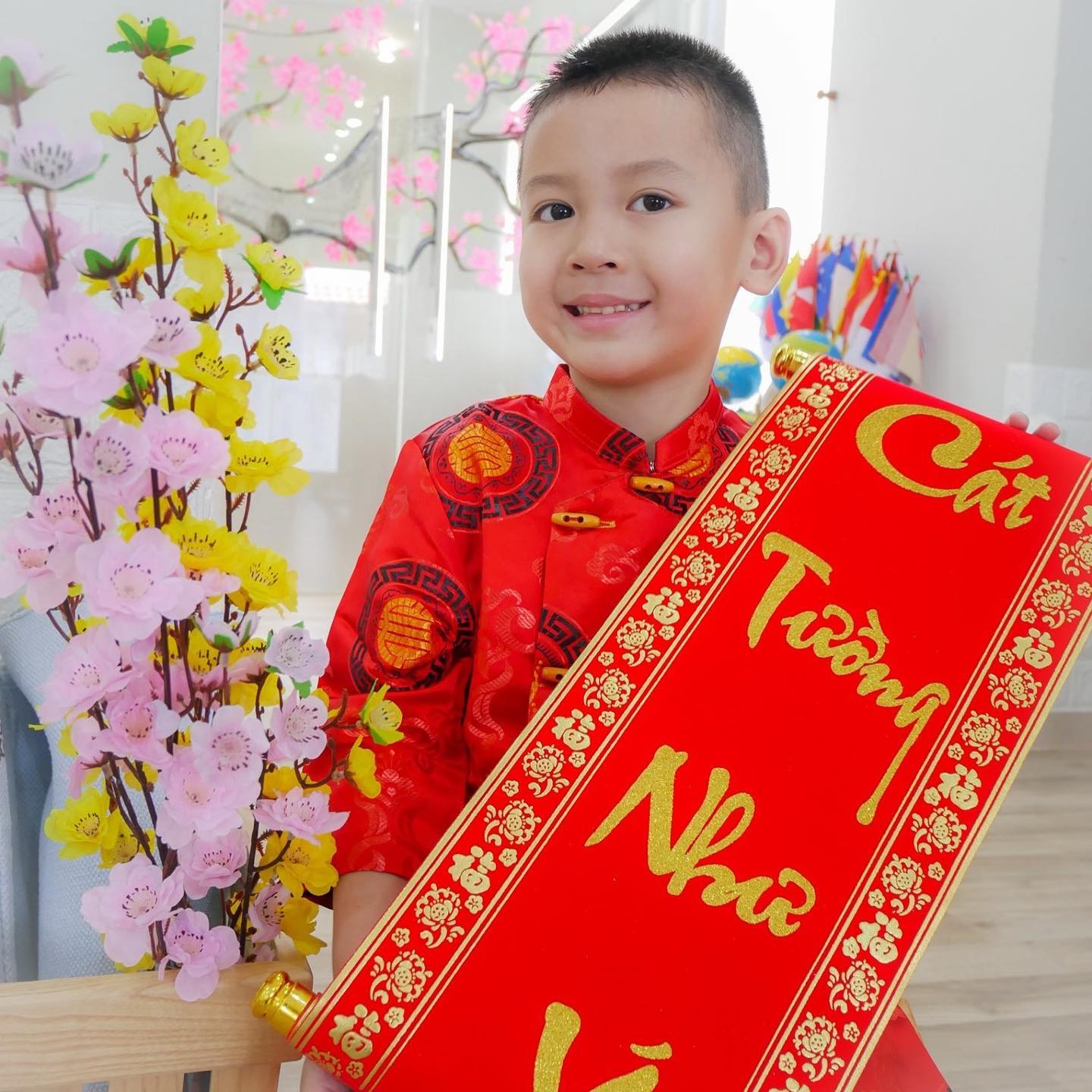 Photo: @sakuramontessori.edu.vn/ Instagram
Photo: @sakuramontessori.edu.vn/ Instagram
Many turn to fortune tellers to identify the perfect day for reopening a business in the new year, aiming to optimize their luck. Whether it’s about business decisions or personal choices, the readings garnered from fortune tellers or sortilege drawn at pagodas are deemed influential in steering individuals towards a smooth year.
“When you eat a fruit, think of the man who planted the tree.”
Just take a quick glance, and you’ll easily spot a must-have item that holds a place of utmost significance in any Vietnamese household—the ancestral altar. In the same way, it’s quite common to observe the amplified embodiment of this very idea during Tet, emphasizing the moral principle of treasuring one’s roots and valuing the traditions of heritage.
Family Reunion
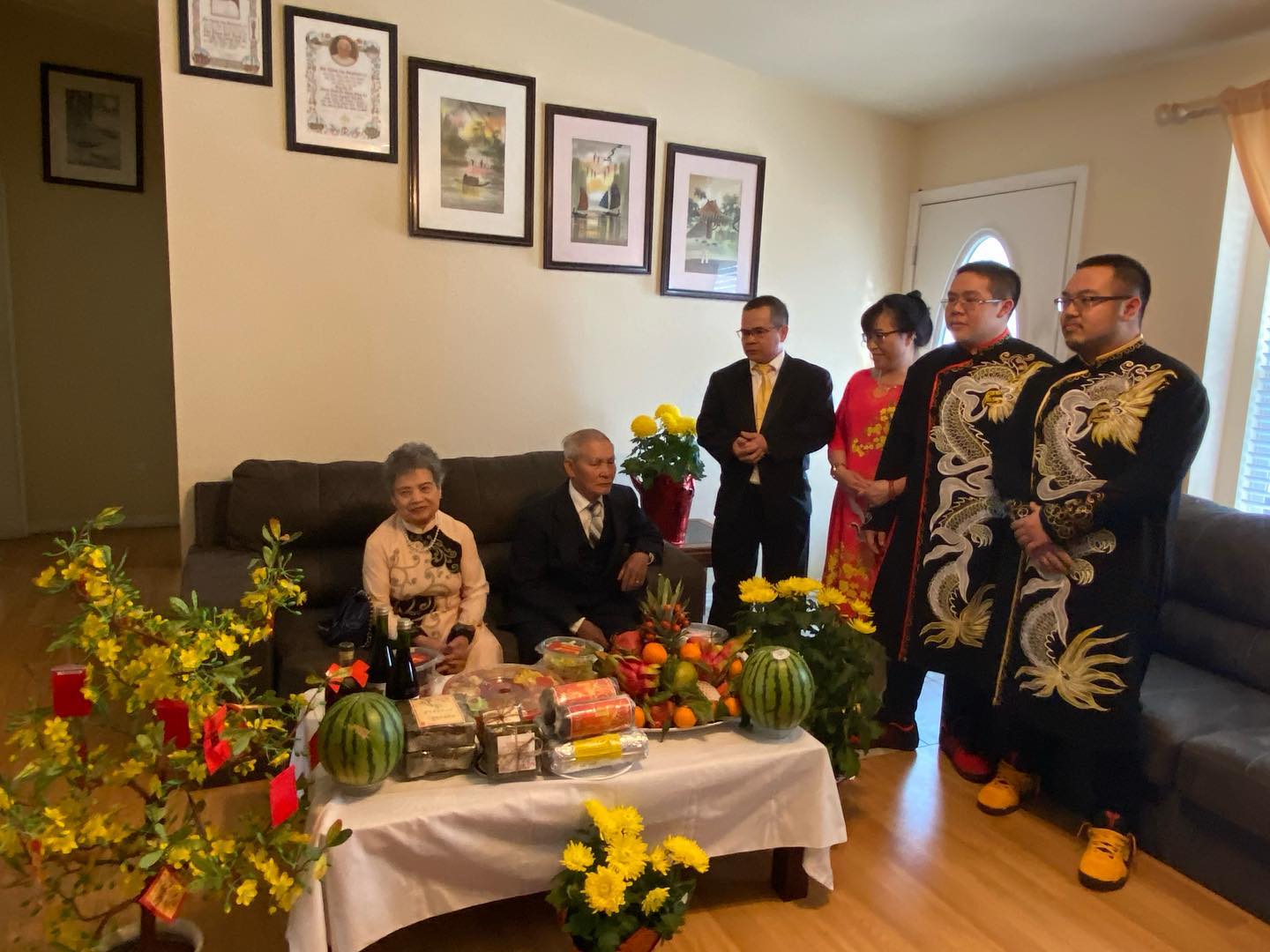 Family Reunion - Photo: @foodphambam/ Instagram
Family Reunion - Photo: @foodphambam/ Instagram
Modern days often see millions of immigrants leaving their hometowns in search of better employment prospects in major cities, either in Vietnam or overseas. No matter how challenging their past year has been, they will always try their best to make it home, ideally 3-4 days before the New Year kicks in to share the load of preparation.
Ancestors' Graves Visit
Similar to the way the living attire themselves in new garments, the act of diligently cleaning and caring for the graves of forebears is believed to bestow upon the ancestors a timely sartorial enhancement for the new year. This practice serves as a symbolic bridge, spanning the generational gap despite the lifetime distance.
Year-End Tribute (“Cung Tat Nien”)
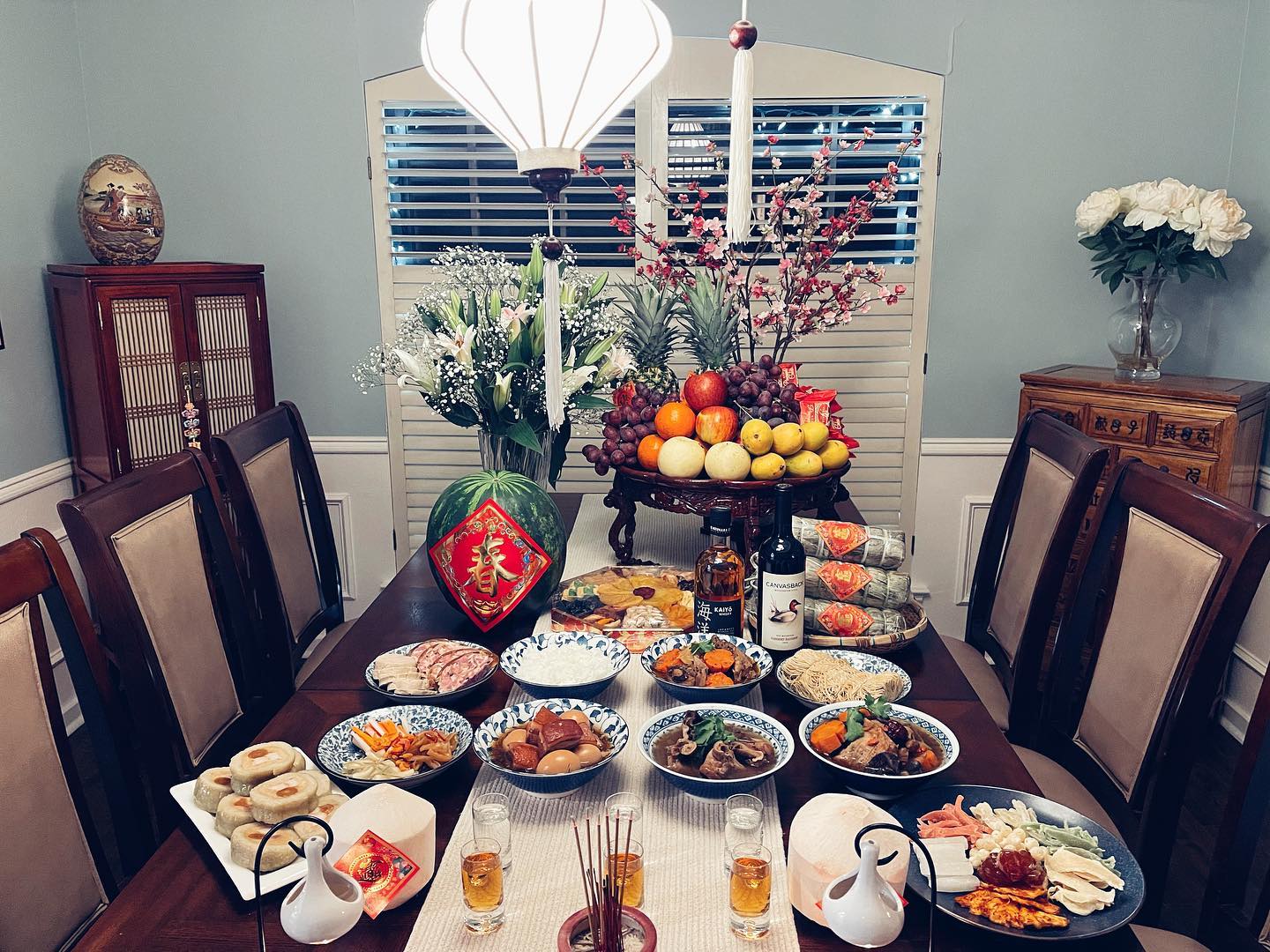 Photo: @cate_anhdiep/ Instagram
Photo: @cate_anhdiep/ Instagram
At the sacred stroke of midnight during Tet, Vietnamese families meticulously set up two altars—one dedicated to the spirits of ancestors and the other to the vast expanse of heavens and earth.
Grounded in deep-seated belief, the ceremonial ritual of showing reverence to one’s ancestors is centered around the idea that, during this act, ancestors reunite with their living descendants at the family altar. Here, they observe the devoted expressions, heartfelt gratitude for guidance, and the pursuit of blessings for a prosperous year from their children and grandchildren. This spiritual connection is seen as a protective force, securing the welfare, prosperity, and stability of their descendants in the year to come.
Offering Burning for Ancestors (“Hoa Vang”)
 Hoa Vang - Photo: @steven.leo7/ Instagram
Hoa Vang - Photo: @steven.leo7/ Instagram
Post-Tet, from the 3rd to the 7th lunar month, families offer gold coins to see off their grandparents as a token of gratitude for celebrating Tet together. The large family gathers for a joyous meal, sharing laughter. Items from the Kitchen God Days, like fruits and candies, are distributed to children, and votive papers are burned for the deceased.
Luck, Fortune, Abundance, and Positive Energy
Beginning the year with a clean slate is a shared aspiration among the Vietnamese during Tet. This profound sentiment permeates every facet of their actions and decisions, encapsulating the essence of renewal and fresh beginnings.
Settling Debts before Tet & Exchanging Wishes during Tet
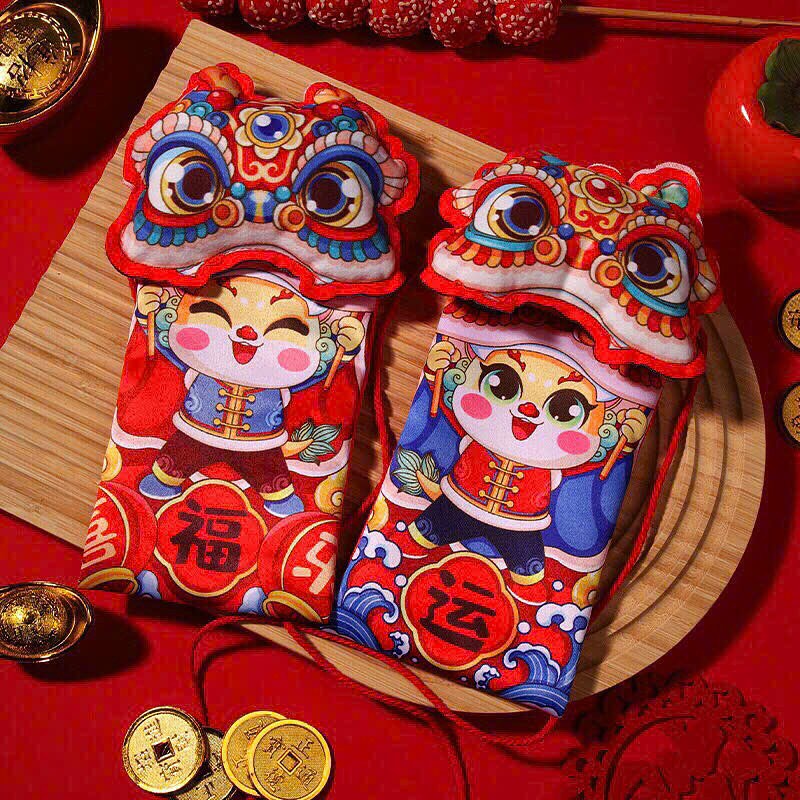 Photo: @denghousevn/ Instagram
Photo: @denghousevn/ Instagram
Tet provides an opportune moment for reconciliation, a time for resolving interpersonal conflicts, a period for attending to neglected matters, including financial obligations, while bidding farewell to emotional discord. Borrowing money or repaying debts in the first few days of Tet is considered to bring bad luck.
Furthermore, exchanging gifts among family members and friends, conveying sentiments of affection, gratitude, and best wishes for the New Year, is a cherished and customary practice during Tet.
Cleaning Houses before Tet
 Photo: @wildflowerbyivy/ Instagram
Photo: @wildflowerbyivy/ Instagram
Homeowners must conclude their home cleaning by the 23rd, the day Ông Táo (The Kitchen God) departs for heaven. The meticulous cleaning process is intended to eliminate any lingering misfortunes from the past year, involving the removal of old items.
As a ceremonial adieu to old belongings and entrenched routines, this cultural practice is believed to help clear space for the influx of fresh fortunes and opportunities waiting to unfold in the upcoming chapter of life.
Bearing this in mind, it is essential not to dispose of trash or break things on the first day of Tet, as this is deemed as casting away good luck.
“Cây Nêu”
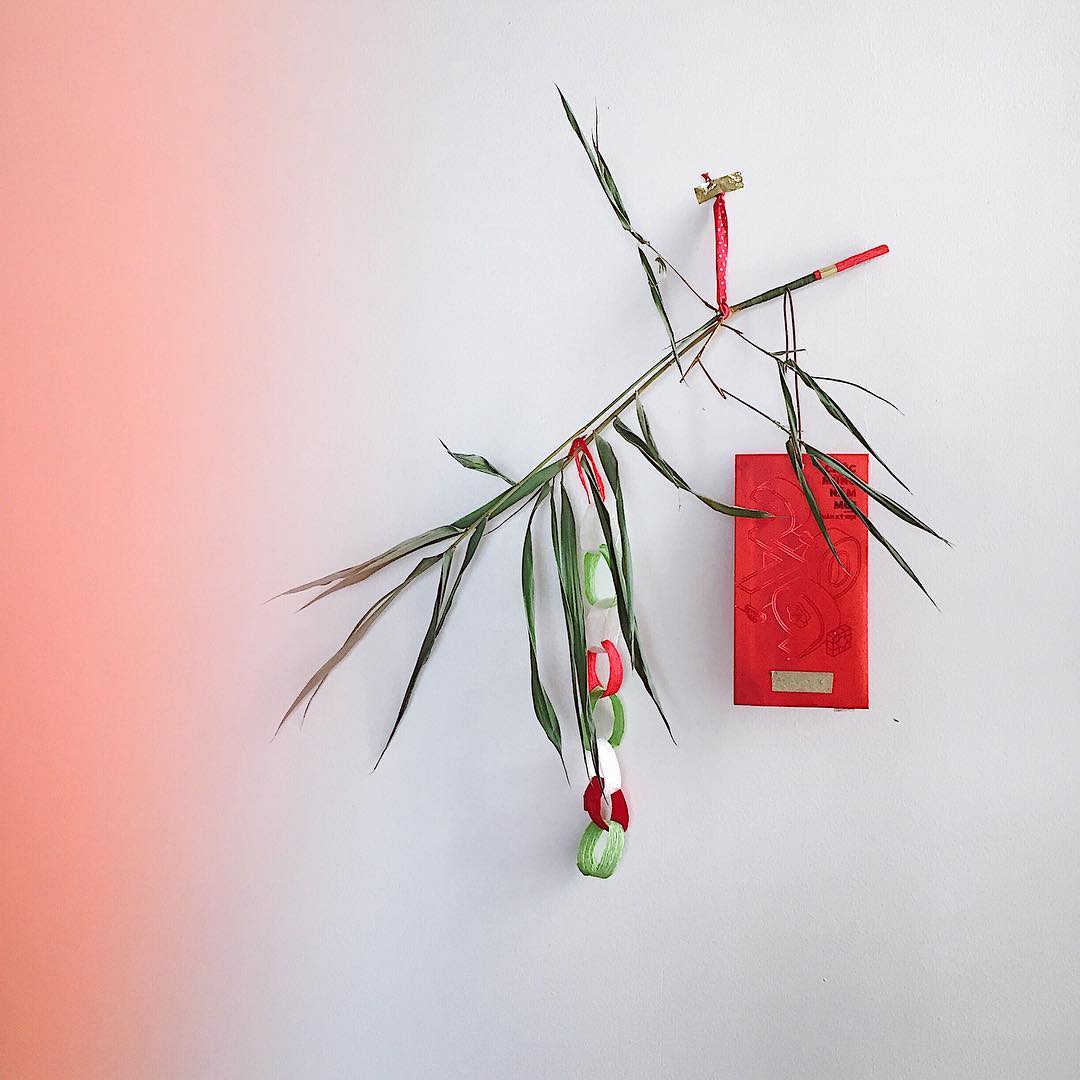 Cây Nêu - Photo: @nora.keepwalking/ Instagram
Cây Nêu - Photo: @nora.keepwalking/ Instagram
Vietnamese people put up “Cây Nêu,” a bamboo pole adorned with decorations, in front of their house to repel evil spirits. Historically, Vietnamese homes featured this long bamboo pole, stripped of leaves and often wrapped in the auspicious color red during Tet.
Its removal also marks the conclusion of the extended New Year celebration, a ritual that endures in traditional festivals in Vietnam.
“Câu Đối” Receiving
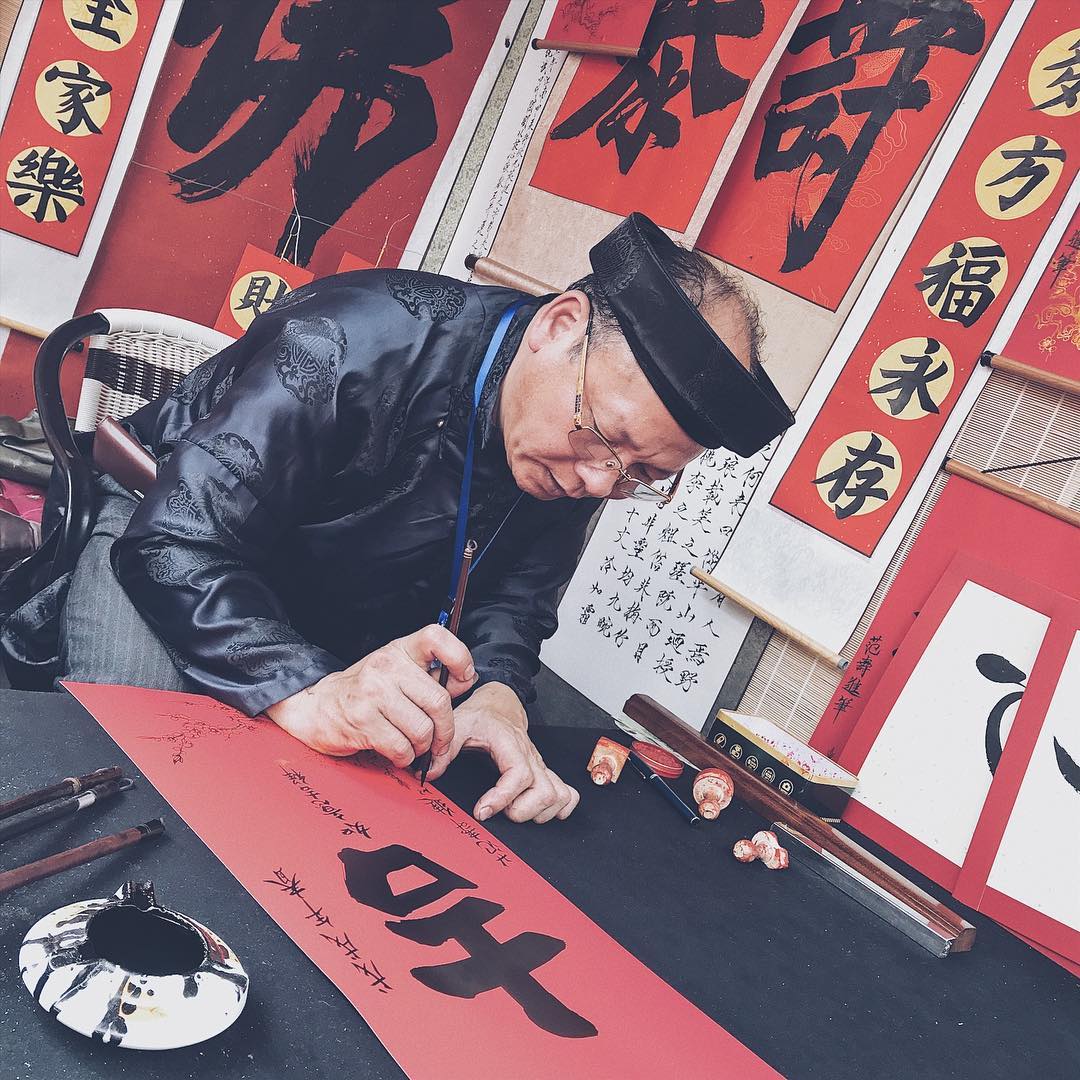 Thay Do - Photo: @emilyypinkyy/ Instagram
Thay Do - Photo: @emilyypinkyy/ Instagram
Celebrating the Lunar New Year includes the creation of calligraphy “couplets” by a Master (“Thầy Đồ”), handwritten pieces that grace homes with cultural and linguistic artistry. Prominently displayed, these couplets convey blessings and embody aspirations for familial unity and a future filled with prosperity. Commonly selected terms include Tâm (Kindness), Phúc (Luck), Đức (Virtue), An (Peace), and Lộc (Money).
First Footer (“Xong Đất”)
“The karma of your first visitor becomes your own,” which suggests that the initial person entering a Vietnamese household on the first day of Tet can shape the family’s fortune for the entire year. To set the stage for a prosperous year, families invite someone with excellent health, moral virtues, notable achievements, and a zodiac sign that harmonizes with the host to be the first to step into the house as a harbinger of good times.
Lucky Money (“Li Xi”)
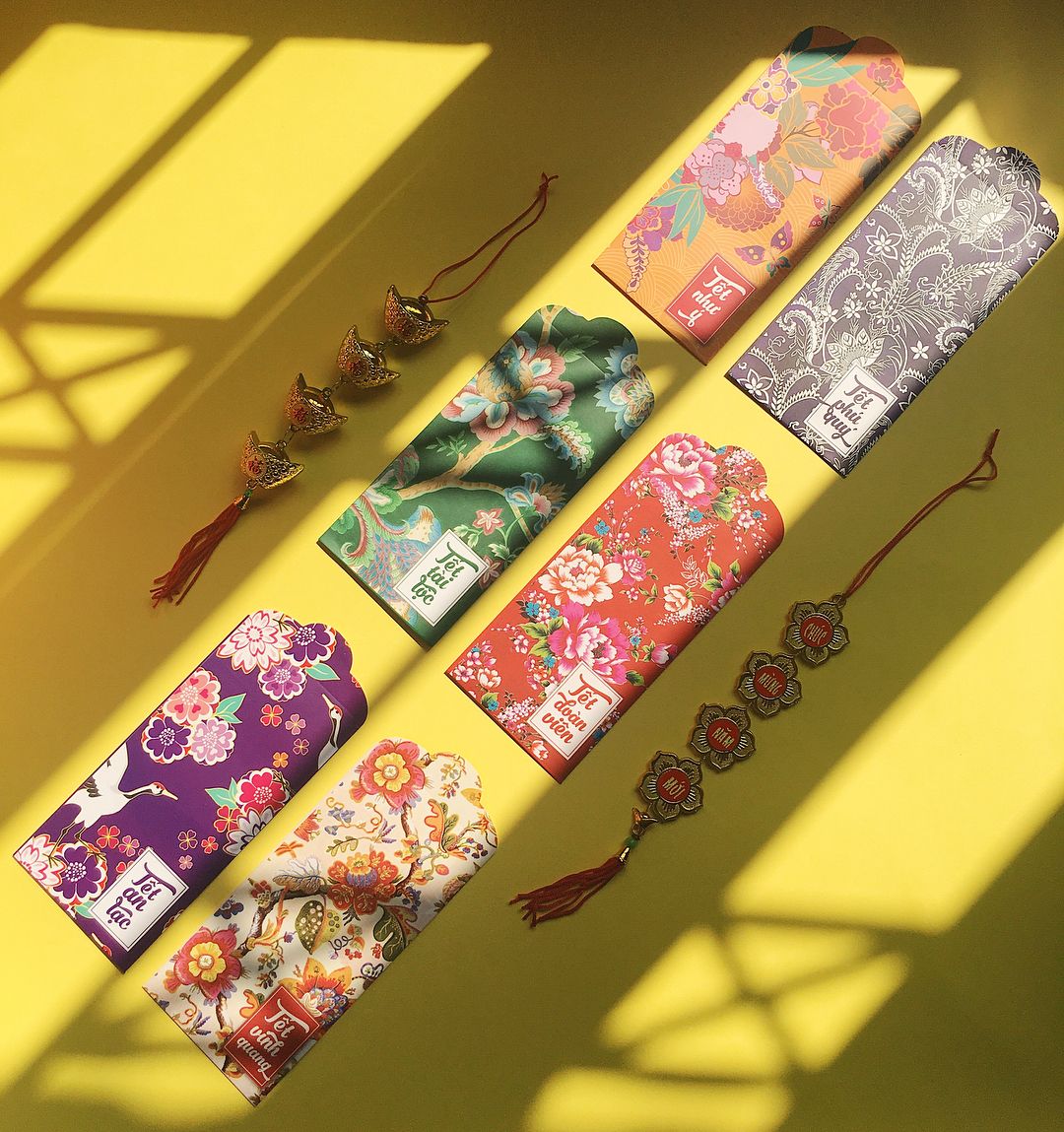 Lucky Money- Photo: @tiemlixi/ Instagram
Lucky Money- Photo: @tiemlixi/ Instagram
This is probably the most awaited activity among Vietnamese children. The act of the elderly giving ‘li xi’ to the younger generation is considered a gracious delivery of fortune, creating a hopeful cycle of receiving more blessings in return. Simultaneously, the tradition of offering lucky money to children signifies a special focus on filial piety, celebrating the enduring lives of the elderly. The monetary value is secondary, as ‘li xi’ primarily embodies the symbolic transfer of good luck.
Food for Tet
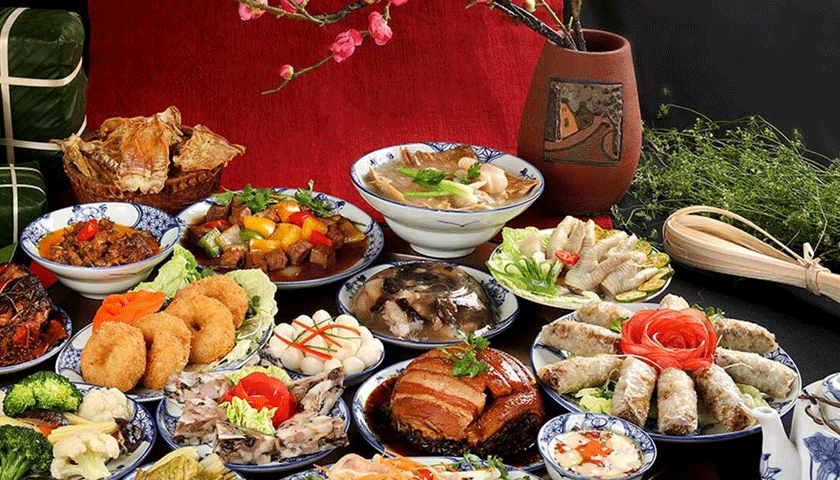 Photo @lasinfoniadelreyhotel.com
Photo @lasinfoniadelreyhotel.com
Tet is usually associated with lavish family meals, though variations in culinary traditions can be discerned when traversing the diverse regions of Vietnam.
Region | Food | Description |
The North | Banh Chung | A square-shaped sticky rice cake symbolizes the earth. |
Banh Day | A round sticky rice cake symbolizes heaven. | |
Xoi Gac | An orange-colored sticky rice symbolizes luck and happiness. | |
Gio Cha / Nem Chua | Vietnamese pork roll symbolizes harmony and abundance. | |
Dried Bamboo Shoot Soup | A traditional dish reflecting the culinary practices of Vietnamese ancestors. | |
The Central | Banh Tet | Similar to Banh Chung, this type of cake symbolizes fullness and completeness. |
Dua Mon | Pickled vegetables like carrots, papayas, and napa cabbage offering a delightful blend of sweetness, sourness, and crunchiness, are commonly savored alongside Banh Tet. | |
Thit Bo Mam | Meat marinated in fish sauce. | |
Banh Thuan | Steamed cupcakes. | |
The South | Banh Tet | Similar to the Central region. |
Cu Kieu | Pickled scallion heads represent money, wealth, and prosperity. Cu Hành (pickled shallots) is also popular. These are usually eaten with dried shrimps. | |
Thit Kho Trung | Vietnamese braised pork belly with eggs, slow-simmered in coconut juice and fish sauce, serves as a symbol of prosperity and togetherness in the form of a comforting stew. | |
Stuffed Bitter Melon Soup | This symbolizes pushing past difficulties. | |
Lap Xuong | A type of Chinese sausage known for its delicious, fragrant taste can be prepared in multiple ways. |
In the lead-up to Tet, Vietnamese households engage in extensive cooking, with late-night sessions devoted to wrapping and cooking Banh Chung. Around the warm pot, family members discuss future plans and life stories, sharing laughter by the wood stove in anticipation of the impending reunion.
The square-shaped Banh Chung represents the land, with green leaves symbolizing gratitude for birth and parental love. The dish embodies the cultural sentiment of "when drinking water, remember its source," emphasizing the importance of rice and nature in wet rice agriculture.
Another delight during Tet is Vietnamese sweets (“Mut”), a collection of candied fruits and seeds featuring melon, sunflower, ginger, lotus, and more. These are usually accompanied by “Keo Me Xung”—a bite-sized brittle cracker/candy crafted with sesame seeds or peanuts and enveloped in baked rice paper—perfect with green tea.
Read more about Essential Food for Tet holiday
Traveling to Vietnam during Tet
 Photo @vspiritcruises
Photo @vspiritcruises
If there’s ever a moment to engage with the local community, it’s during Tet. However, for solo travelers without any local friends, here are some useful tips to navigate the celebrations and make the most of your time during this significant Vietnamese holiday:
Weather
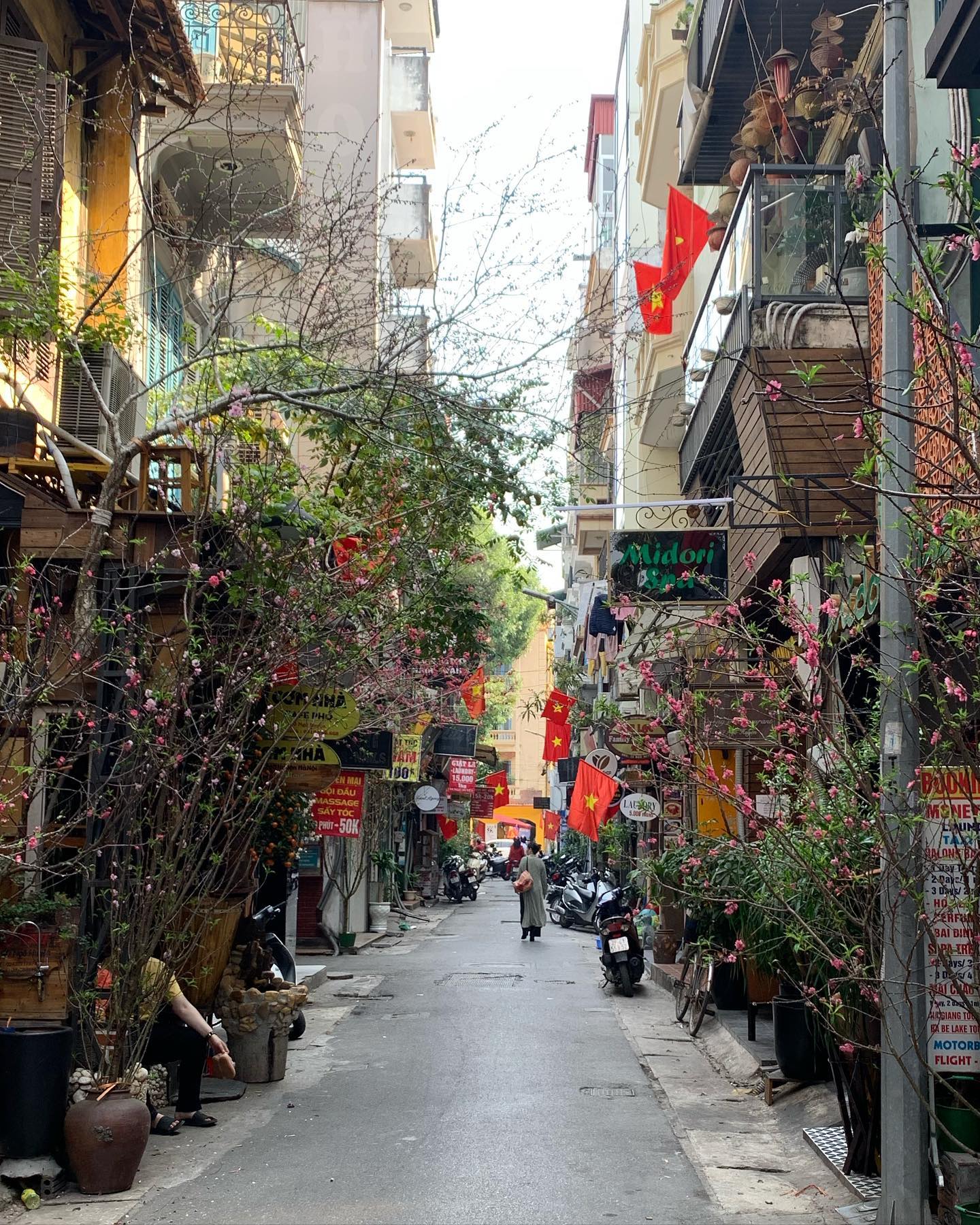 Hanoi in TET - Photo: @bi_ve_/ Instagram
Hanoi in TET - Photo: @bi_ve_/ Instagram
Dry, radiant weather is anticipated for Vietnam. The northern areas (Hanoi, Halong Bay) will be notably cool and exceptionally dry, with occasional instances of sub-zero temperatures. The central (Hoi An, Danang, Hue, Nha Trang) and southern regions (Ho Chi Minh City, Mekong Delta) will experience milder conditions, providing a more enjoyable atmosphere.
Visa Application
As the entire country comes to a standstill for a span of 4-5 days before and after Tet, this is expected to affect overseas embassies and Vietnam-based immigration offices. That’s why it is essential to plan your exit and entry formalities ahead.
Transportation
If you plan to travel around the three weeks of the Tet holiday, just don’t. Flights, buses, and trains fill up quickly about a week before or after Tet as migrant workers return home and holiday-goers head to tourist spots. Book early to secure your travel plans, but be aware that the chaos lasts for three weeks, with packed transportation, soaring prices, and doubled travel times due to heavy traffic.
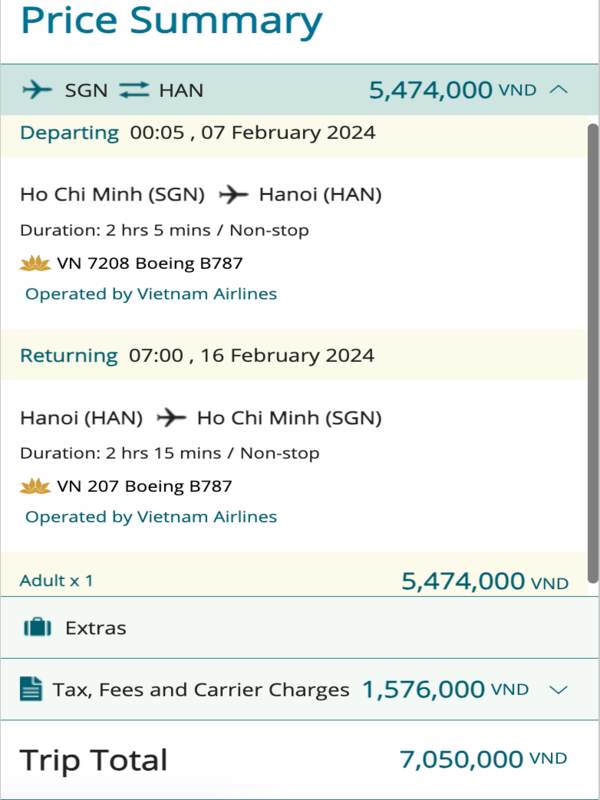 Unprecedentedly high prices for a two-way flight departing 3 days before Tet and 6 days after Tet in 2026 (Source: Vietnam Airlines).
Unprecedentedly high prices for a two-way flight departing 3 days before Tet and 6 days after Tet in 2026 (Source: Vietnam Airlines).
Accommodation
You can find hotels open during Tet without much hassle, as most remain operational. Keep in mind that some hotels might adjust their prices upward for stays during the Tet holiday. It’s also a good idea to check with your hotel if they have any engaging activities planned for Tet to take advantage of.
Sightseeing
For history and art fans, Tet might not be an ideal time to visit Vietnam, as museums, mausoleums, indoor exhibition places, and art houses will be closed for the first three days of Tet. The floating markets in the Mekong Delta will close even earlier. But these turn out to be better than you'd think.
How often do you see the streets of Hanoi or Ho Chi Minh City and Nha Trang or Da Nang's beaches abandoned like a ghost town? Exactly. Just relax, walk around the Hanoi Old Quarter, or go sunbathing on beaches during Tet. It is certainly a sight to appreciate on such a special occasion. You’ll thank yourself later when boredom starts kicking in.
Restaurants
Ah, the most important matter of all: will I starve? You might if you crave authentic street-side Vietnamese food. Culinary fans, be warned! However, big food chains and Western-styled bistros will still be open, not to mention convenient stores!
A service surcharge of 15% to 30% will likely also need to be factored in here. Whether it is explicitly stated or not, raising your eyebrows in this situation will not do you any good.
Shops
Almost every Vietnamese business will close for Tet (even if just for a day). The upside is that many products are sold at reasonable prices as sellers aim for a smooth sales year. The smoothness is mutual and therefore expected from buyers as well. Our advice is to avoid bargaining in the earlier days of Tet.
Remember to stock up water and necessities before Tet strikes.
Banks
Note that banks will close for the holiday, but ATMs will still be functional. Opt for hotels if you need to exchange currency, despite the potentially less favorable exchange rate.
Package Tours
If your adventurous spirit leaves you restless, consider signing up for cultural tours during Tet. Some tour agencies offer the chance to see how the Vietnamese community in Chinatown prepares for Tet, but you will not be on foot; you will be taking everything in by pedicab!
The tour also goes through the flower market and other tourist destinations. You can join local people that the tour operators have liaised with to make Banh Tet or Banh Chung and enjoy a meal with them afterward.
These experiences are not confined to the city. Consider signing up for tours to the Mekong Delta province of Vinh Long for a rural life perspective as well.
Ben Thanh Tourist has launched new tours. The one-day tour includes Vinh Sang Tourist Park and visits to local families in Vinh Long Province to observe rural life and Tet celebrations by local residents.
You can also read our tips on traveling to Vietnam during Tet here.
Tet in Major Cities in Vietnam
Aside from fireworks and public events, each major city in Vietnam showcases its unique annual customs, enhancing the charm of Tet celebrations.
Ho Chi Minh City
Ben Thanh Market Square
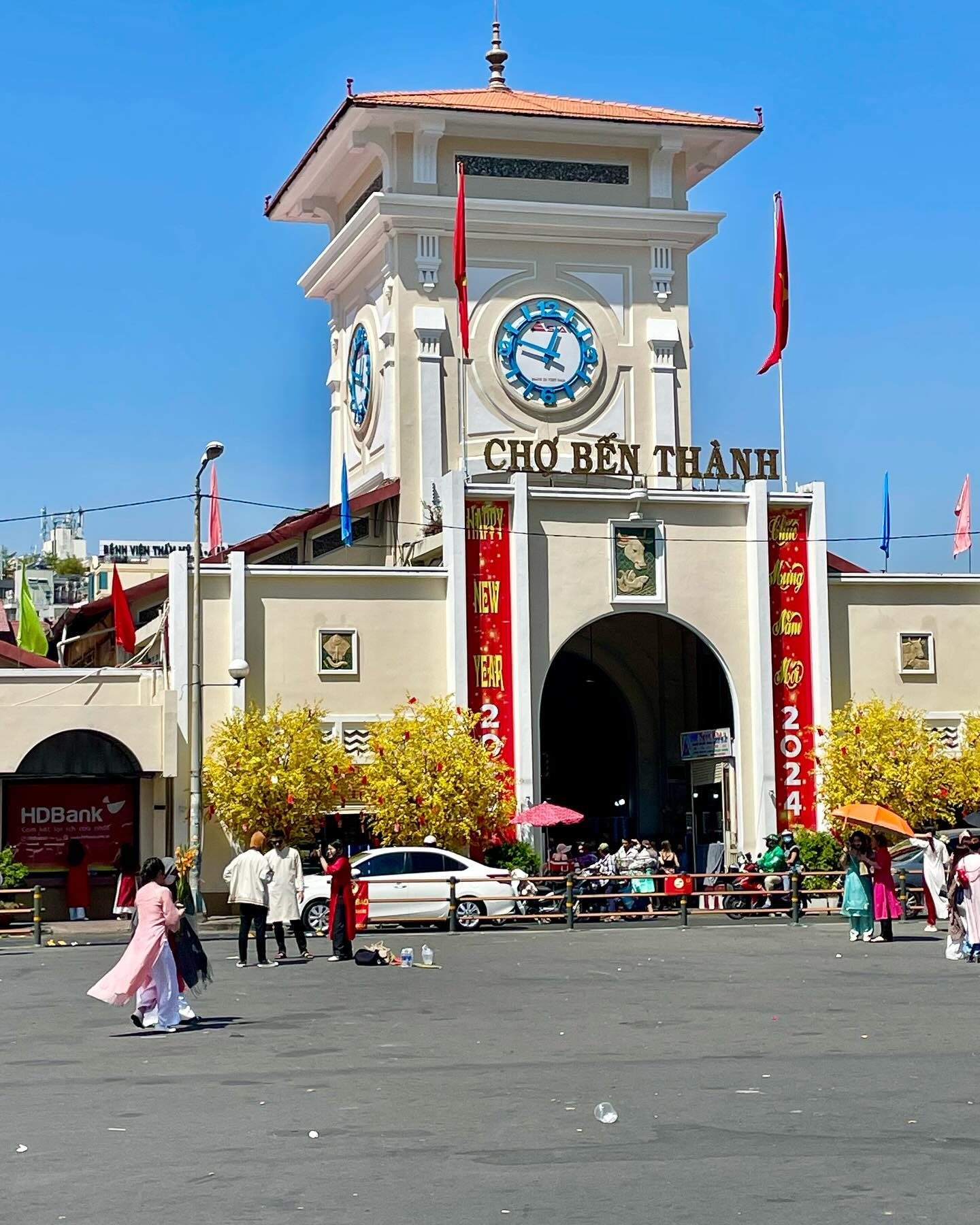 Ben Thanh Market - Photo: @winenchocolatevacationlady/ Instagram
Ben Thanh Market - Photo: @winenchocolatevacationlady/ Instagram
Before Tet, make your way to Ben Thanh Market Square and observe the vacant front space turning into a vibrant center for Tet photography, with crowds donning traditional ao dai attire.
Nguyen Hue Flower Street
Another annual hotspot for Ho Chi Minh City residents is Nguyen Hue Flower Street. This year, Nguyen Hue Flower Street will be open to visitors from 19:00 February 16, 2026, to 21:00 February 23, 2026. Up to 99 species of flowers with over 90,000 baskets will be arranged as part of this collaboration between the organizing committee with farmers from HCMC, the Mekong Delta, and the Central Highlands city of Dalat.
As per the event organizers, the 2026 Tet (Lunar New Year) flower street on Nguyen Hue will incorporate over 70% environmentally friendly materials in its decorative elements. Anticipate a vivid presentation of red, orange, and yellow hues, accentuating the beauty of flowers like dahlia, marigold, chrysanthemum, cockscomb, and begonia.
Lion and Dragon Dances
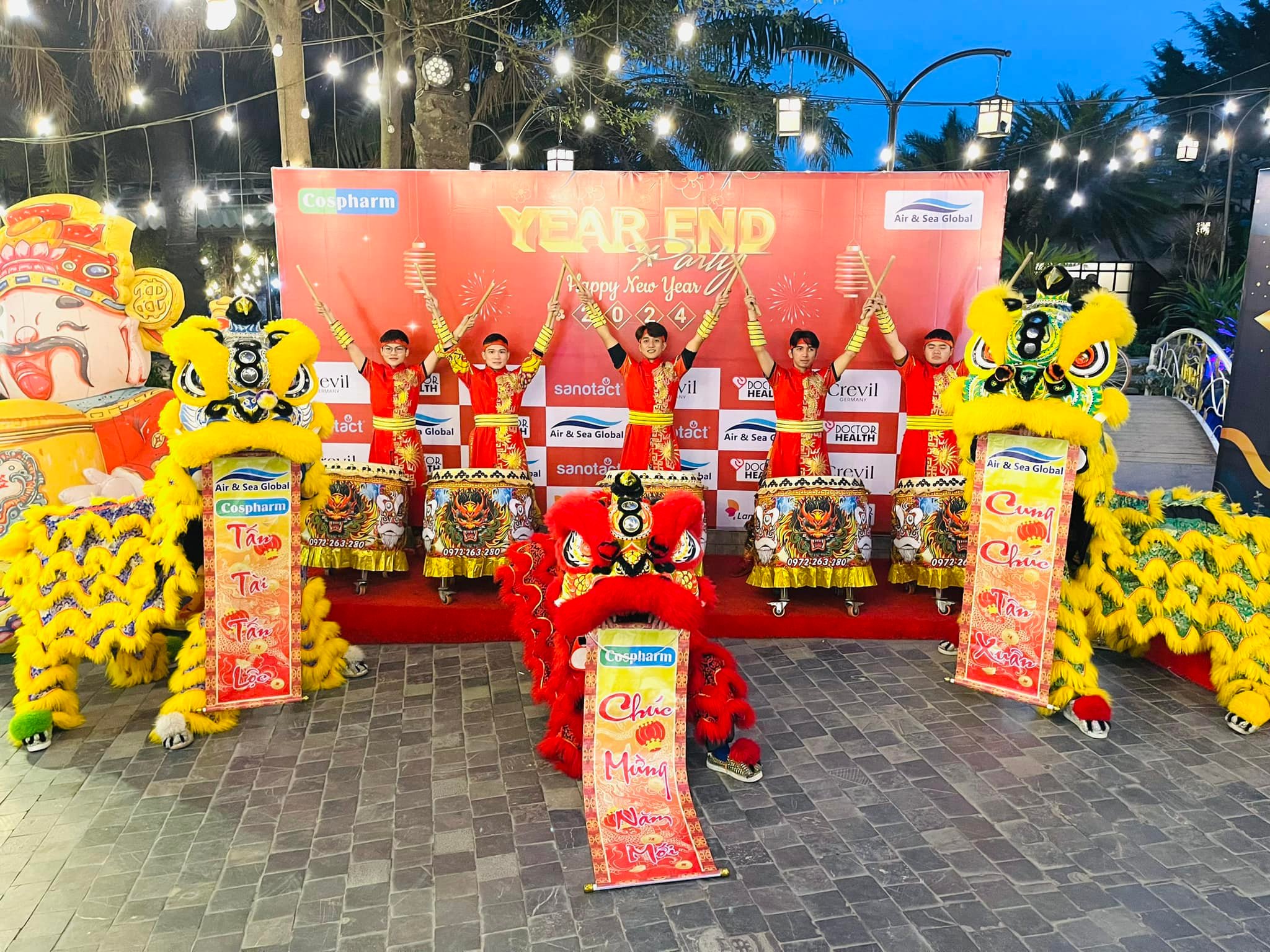 Photo: @lansuronghanoi/ Instagram
Photo: @lansuronghanoi/ Instagram
Culture-wise, no Southern resident can forget the experience of watching lion and dragon dances on the festive days of Tet. The enthralling “lions” and “dragons” are skillfully maneuvered by two to four dynamic young or middle-aged men, engaging in an animated ritual dance. The dynamic performance resonates with the lively beats of drums and gongs, while the house or business owner sets challenging heights for the lions and dragons to attain their desired “li xi.”
As a customary event, dragon and lion dance troupes from throughout Ho Chi Minh City unite on the 30th day of Tet, making their way to Bà Thiên Hậu Pagoda for the cherished “khai quang điểm nhãn” ceremony, symbolizing the community's wish for a harmonious, prosperous, and successful year.
Hanoi
Hang Ma Street (“Phố Hàng Mã”)
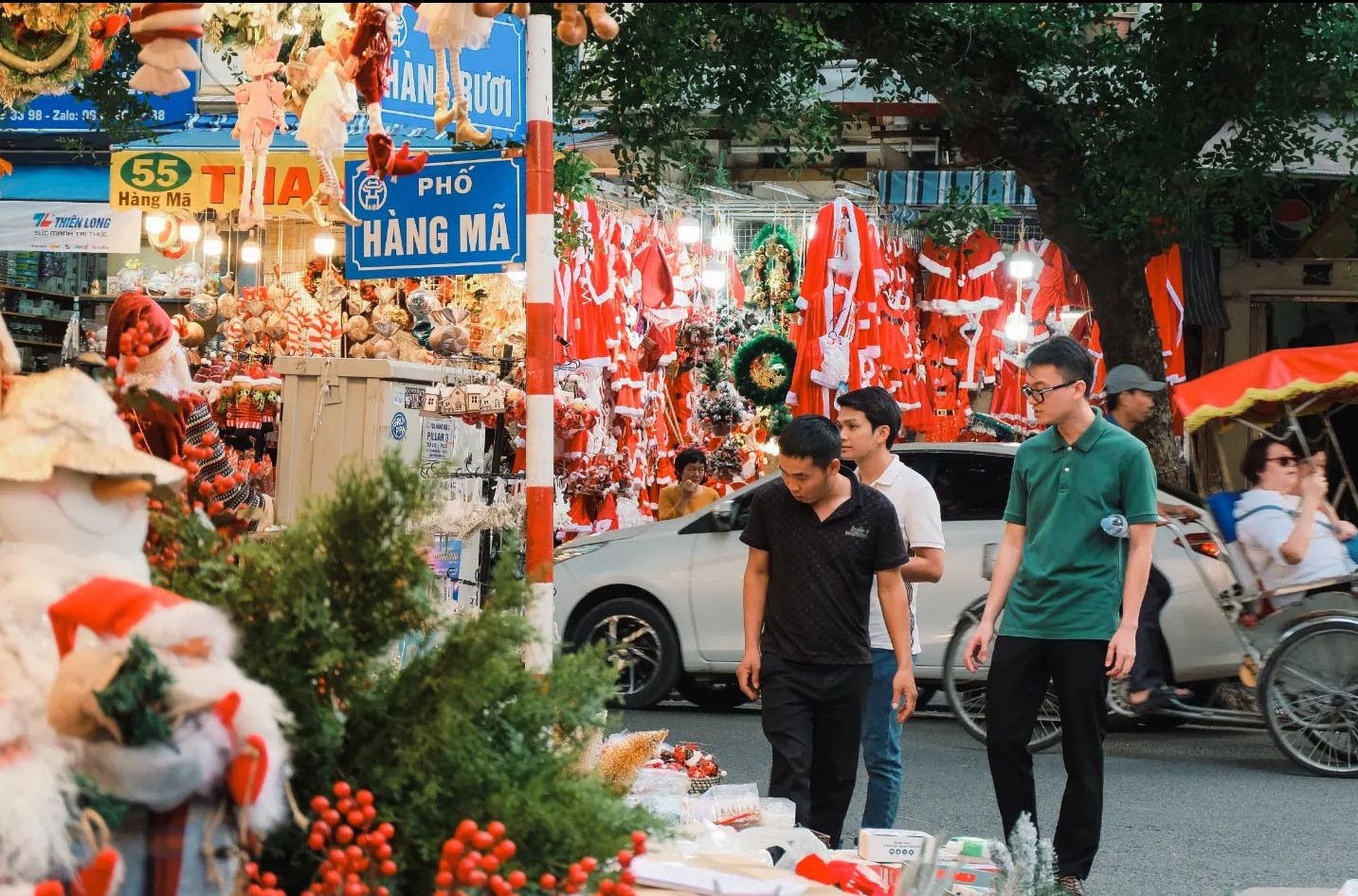 Hang Ma Street - Photo: @xahinhquyen/ Instagram For a vibrant and bustling Tet experience, Hang Ma Street is the place to be. “Hàng mắ” in Vietnamese means “joss goods.” Since Vietnamese people are quite spiritual and connected to their deities and ancestors, this street in Hanoi transforms into a lively marketplace during the Lunar New Year, with shops and stalls offering a plethora of Tet-related goods, decorations, and traditional items. Navigating through the colorful array of merchandise, visitors can immerse themselves in the festive spirit, shop for Tet essentials, and witness the lively energy of locals preparing for the joyous occasion.
Hang Ma Street - Photo: @xahinhquyen/ Instagram For a vibrant and bustling Tet experience, Hang Ma Street is the place to be. “Hàng mắ” in Vietnamese means “joss goods.” Since Vietnamese people are quite spiritual and connected to their deities and ancestors, this street in Hanoi transforms into a lively marketplace during the Lunar New Year, with shops and stalls offering a plethora of Tet-related goods, decorations, and traditional items. Navigating through the colorful array of merchandise, visitors can immerse themselves in the festive spirit, shop for Tet essentials, and witness the lively energy of locals preparing for the joyous occasion.
Hung King Temple (“Đền Hùng”)
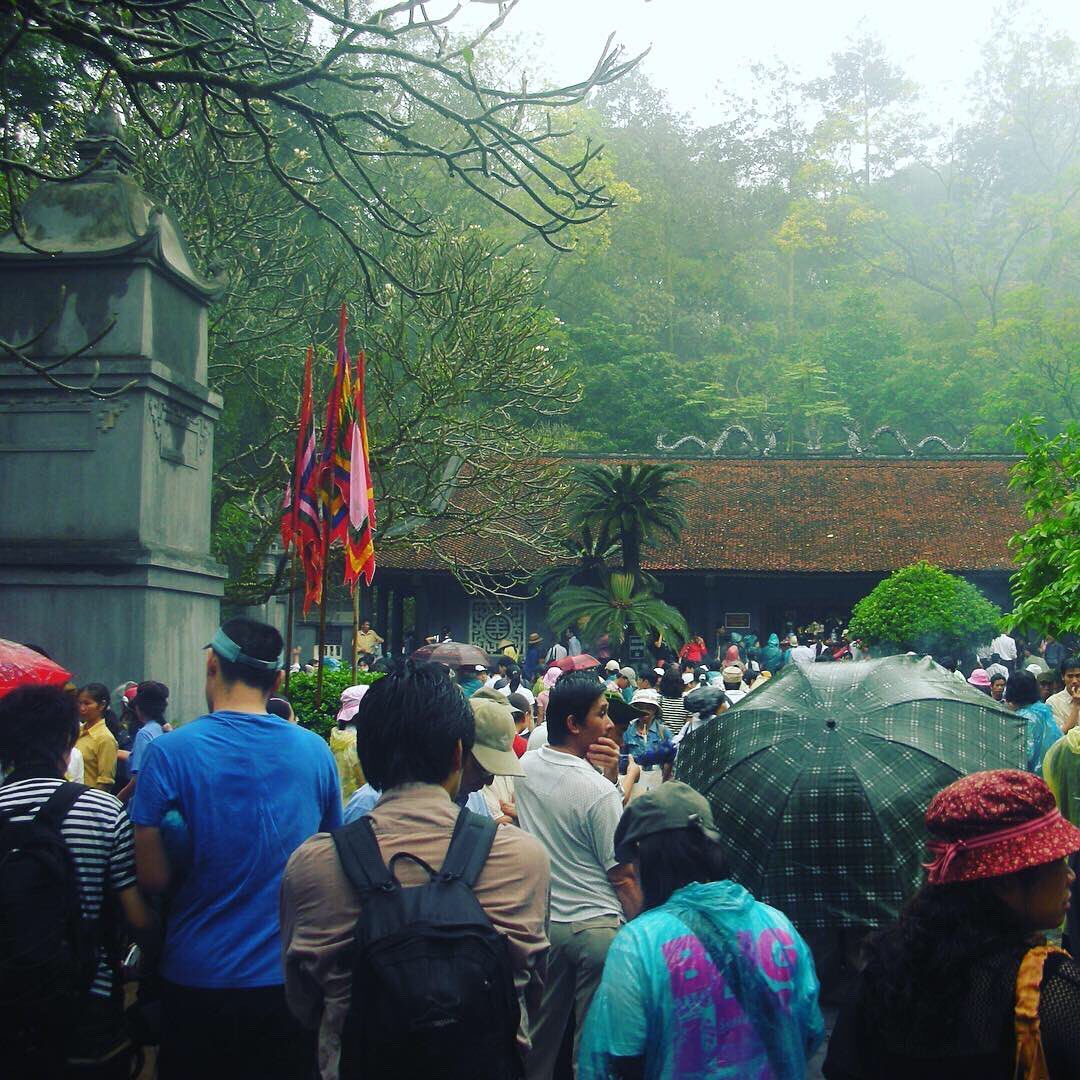 Hung King Temple - Photo: m.i.g.i.a.i/ Instagram
Hung King Temple - Photo: m.i.g.i.a.i/ Instagram
Tet festivities take on a historical turn with a visit to Đền Hùng, an ancient temple steeped in Vietnam's storied past. The atmosphere is infused with patriotic fervor as people gather to honor the founders of the nation—the Hung Kings.
Pilgrimage to Hung King Temple typically takes place on the first day of Tet. Beware of the crowd, though; instances of people stomping on each other or experiencing hard breathing as they rush for blessings inside the temple have been reported.
Perfume Pagoda (“Chùa Hương”)
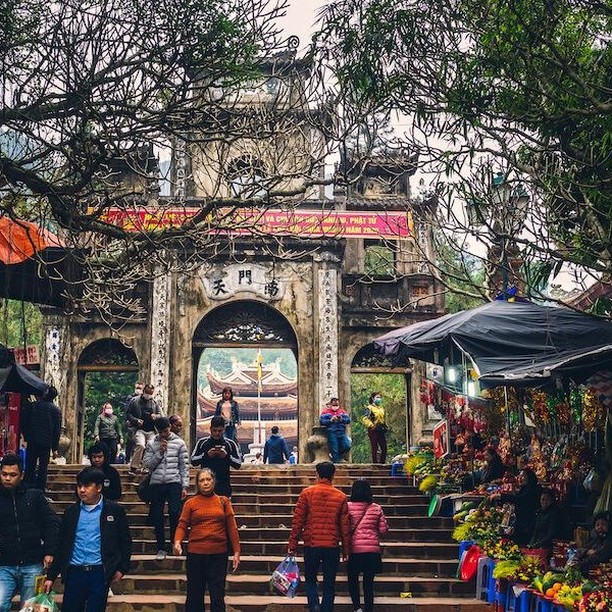 Perfume Pagoda - Photo: travelplus633/ Instagram
Perfume Pagoda - Photo: travelplus633/ Instagram
More than just a sacred Buddhist site, Perfume Pagoda is sought after because of its breathtaking scenery. With pure water year-round and surrounded by a rich canvas of wild vegetation on both sides of the bank, the Yen Stream—the only entry leading you to the pagoda—offers a sense of spirituality and serenity like no other. Sitting on a small boat drifting along the stream, we dare you not to be in tune with the mesmerizing beauty that spring has blessed this corner of Vietnam.
Conclusion
Tet to Vietnamese is a time of reflection, renewal, and family bonds. The festival's colorful preparations, spiritual connections, and emphasis on luck and positivity create an atmosphere of joy and hope. Traveling to Vietnam during Tet can offer you a unique perspective, like witnessing cities transformed into serene landscapes.
As Tet approaches, whether you’re a passing visitor or embracing it as a thrilling adventure in Vietnam, may your travels be filled with good health, luck, and enchanting experiences.
Last but not least, “Chúc mừng năm mới!”
I wonder what would be a good thing to do for my Vietnamese neighbor on Tet.
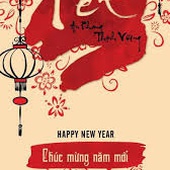
New Year Wishes
Tet holidays are the moments of happiness and family enjoy, therefore Vietnamese often dedicate the most beautiful words to their family and friends on this occasion.
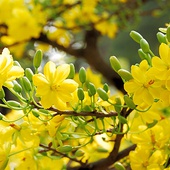
Tet Flowers & Plants
Tet holidays are the days of relaxation, happiness and joy. And similar to pine tree for Christmas holiday in the West, Vietnamese also use many kinds of flowers and plants to decorate their house in this special period.
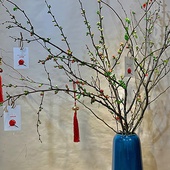
What Gifts Do Vietnamese Bring For Tet?
Giving gifts on Tet Festival, which has been long a traditional custom in Vietnam’s ancient culture, represents not only the close relationship but also the thorough and subtle of human behaviors. Vietnamese are extremely careful in talking and behaving on the very first days of New Year, as it can determine the good fortune throughout the year.











